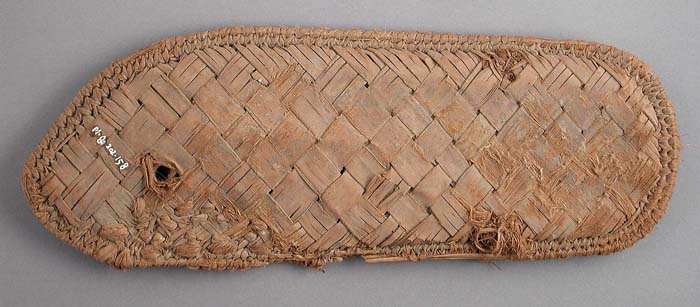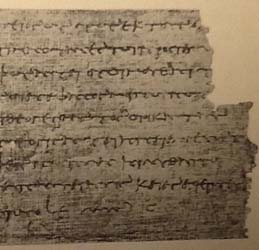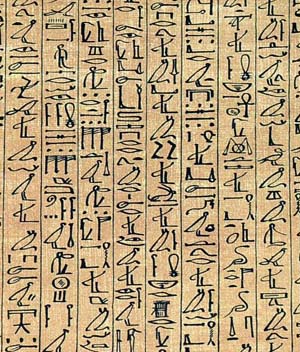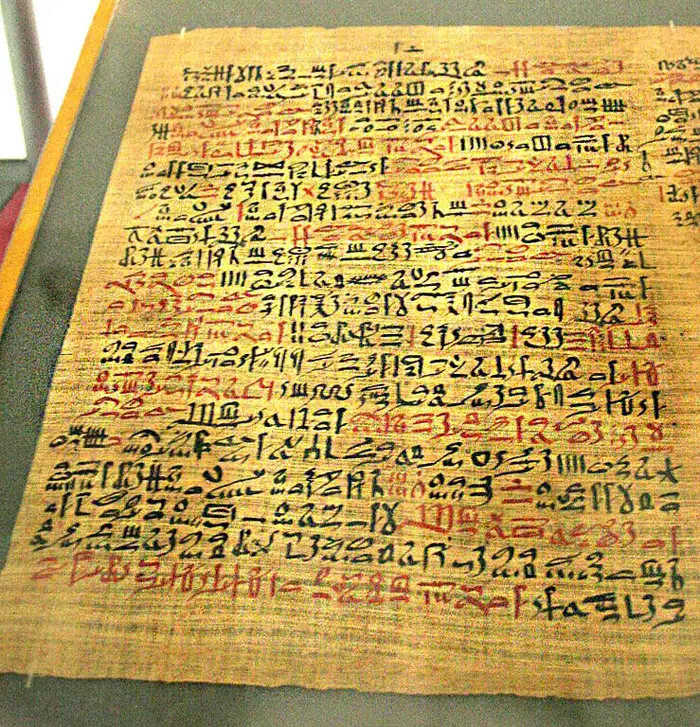Papyrus began as the world’s first type of paper, derived from the Cyperus papyrus plant. Even though it was developed in Egypt, it spread across the ancient world and was used throughout West Asia. Before papyrus became common, many cultures wrote on clay tablets. It was eventually replaced by the Chinese method of making paper from rags.
What is Papyrus?
Papyrus is both the shortened name of the plant and the paper product made from it, but is most often referred to as the latter.
The plant grows in the Nile River and can reach heights of about 16 feet. The long stalks of the plant were typically soaked in water until they reached a slight state of rot. They were then laid next to and on top of each other, and pounded flat until the stalks essentially merged. The final step was drying.
Egyptians used papyrus for much more than just making paper however. Papyrus was also used in woven material such as baskets, mats, rope and sandals. The stalks could be bundled together to make boats and when dried, it could be used for fuel. For a long time, the art of turning papyrus into paper was lost. Although the Egyptians did not leave much evidence on how it was done, in 1965, Dr. Hassan Ragab rediscovered the process through intense research.

Papyrus Sandal
The Papyrus Plant

Papyrus Plant
Cyperus papyrus is a flowering plant that grows in water. Native to Africa, it belongs to the sedge family of Cyperaceae and grows tall, thick stands of vegetation in water. The plant does not have leaves, but instead grows from a clumpy, triangular mass of stems. At the top of each stem sits a feathery mass of thread-like stems that give it the appearance of a feather duster.
Flowers form eventually at the end of the array, forming brownish-green clusters. These then give way to brown fruits resembling nuts. The papyrus plant enjoys full sun and has a sensitivity to frost, like most tropical plants.
History of Papyrus in Ancient Egypt
The first instance of documented papyrus came in Egypt’s first dynasty. However, many researchers believe that papyrus was used as a writing material as early as 4,000 BC. It continued in some manner of use until about the 11th century. Its primary rivals as a writing material included scrolls made from animal skins and the Chinese method of making paper from rags.
Parchment and paper went into widespread use by the 12th century in Europe and elsewhere, however, papyrus remained an option in some places. Egypt continued using it until the inexpensive paper became more common.

Papyrus Letter
Ancient Egyptian Papyri
A variety of documents written on papyrus remain preserved to this day. The various documents contain a range of subjects, from biographies, to maps, religious texts and scientific or medical documents. A short list of papyri from ancient Egypt with subject matter is as follows:

Papyrus of Ani, Book of the Dead
- Abusir Papyri (record of Neferirkare Kakai)
- Moscow Mathematical Papyrus (math problems)
- Berlin Papyrus (medical topics)
- Westcar Papyrus (magical tales)
- Hearst Papyrus (medical text)
- Papyrus Boulaq 18 (palace administration)
- Reisner Papyrus (official records)
- Turin Erotic Papyrus (erotic drawings)
- Papyrus of Ani (the Book of the Dead)
- Turin King List (list of kings)
- Judicial Papyrus of Turin (Harem conspiracy report)
- Papyrus Harris 500 (poems and stories)
- Turin Papyrus (map)
- Leopold II and Amherst Papyrus (crime investigation)
- Papyrus Lansing (schoolbook)
- Papyrus Chester Beatty I (poetry, story of Horus and Seth)
- Milan Papyrus (Greek poetry)
- Papyrus Bremner–Rhind (hymns of Isis and Nephthys)
- Papyrus Berlin 3048 (marriage contract)
- Greenfield papyrus (Book of the Dead)
- Papyrus D’Orbiney (Tale of Two Brothers)
The Ebers Papyrus
The Ebers Papyrus is particularly famous among ancient Egyptian papyri. It contains extensive herbal and medical knowledge and dates back to 1550 BC. It currently resides in the University of Leipzig library in Germany.
Georg Ebers bought the document in 1873–74 at Luxor. The scroll is about 110 pages long and is considered one of the oldest medical documents in the world. It has about 700 formulas and remedies of both a magical and herbal nature. It illustrates the Egyptians’ knowledge of the heart as the center of the body’s blood supply, but at the same time contains incantations for getting rid of demons. It covers such medical subjects as contraception, asthma, bone-setting, dentistry and burns.

The Ebers Papyrus
One example of a medical remedy describes an herbal formula to be heated on a brick for asthma sufferers. The patient was instructed to inhale the fumes. Another remedy to remove a Guinea worm remains in use today, some 3,500 years later.
Quick Facts About Ancient Egyptian Papyrus
- Papyrus with writing on it is known as papyri
- The dry Egyptian climate helped preserve the ancient papyri
- Papyrus was called wadj in the Egyptian language
- The English term papyrus comes from the Greek papuros
- The papyrus plant is one of the most ancient forms of plant life known to man
- The papyrus plant has largely disappeared from Egypt in the present day
- It is unknown when exactly papyrus began to be used in ancient Egypt as a writing material
- Preserved scrolls of papyrus contain a variety of ancient writings, records and knowledge
- Medical knowledge from the Ebers Papyrus is still in use today
- Papal bulls were written on papyrus until 1022 AD
- Herculaneum made the first discovery of modern rolls of papyri in 1752 AD
- Papyrus continues to be used in a variety of ways by the peoples of East and Central Africa
- Papyrus remains a recognizable symbol of ancient Egypt






































